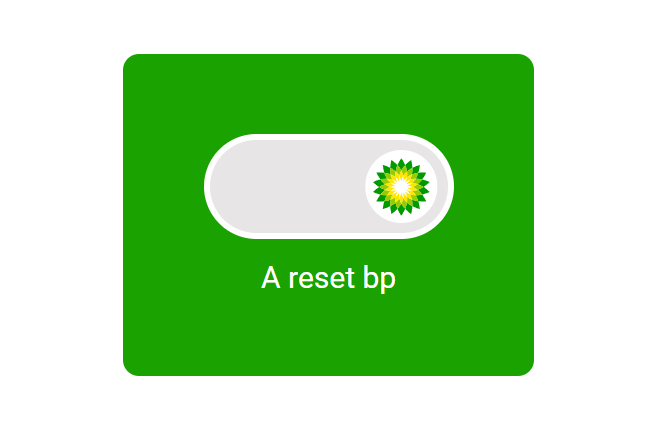There are huge risks when a company decides it’s time abandon its roots and pursue new operations. This is true even for oil companies that tried to shed their pasts by looking into more clean, green and renewable energy projects. This news is certainly going to piss on the dreams of many green interests, but BP PLC (NYSE: BP) now just wants to go back to being an oil and gas company.
BP had been on a multi-year journey to diversify its revenue stream for the future by targeting almost anything and everything clean and green. There is after all, pollution, climate change, and global warming pressures from many efforts and interests in the world.
BP’s major challenge has been that oil and gas companies know how to drill for oil and gas for a profit. The reality in diversifying toward alternative energy, clean and green and renewables is that the companies pursuing these aspects are still not universally profitable. That’s even after more than 20 years of pressuring the fossil fuel industries and after two decades of tax breaks and financial incentives.
It is very possible that tactical investors who want exposure to oil and gas stocks may finally look at BP as a viable investment again for the first time in 10 years to 15 years.

Here is the crux of BP’s “reset” announcement:
BP today introduced a fundamentally reset strategy, with significant capital reallocation, and plans to drive improved performance, aimed at growing free cash flow, returns and long-term shareholder value.
THE BIG HIGHLIGHTS
BP will reduce and reallocate capital spending, will significantly reduce costs and drive improved performance. The goal is to increase its cash flow and returns with a stronger balance sheet and resilient distributions. The phrase resilient distributions is generally a code for dividends and buybacks.
The oil giant will increase oil & gas investment upstream to approximately $10 billion per year. It plans to strengthen its portfolio and grow production to 2.3 million to 2.5 million barrels of oil equivalent per day in 2030. It is targeting an additional $2 billion or so in operating cash flow in 2027.
BP’s downstream focus is to reshape the portfolio to drive growth, with “high-grading and focusing on advantaged and integrated positions.” BP has also announced a strategic review of Castrol lubricants business (reportedly worth as much as $10 billion), as well as looking for an additional $3.5 billion to $4 billion in operating cash flow in 2027.
Where the clean tech reversal comes into play is BP’s selective investment in biogas, biofuels and EV charging. It will use “capital-light partnerships” in renewables. It will focus investment in hydrogen and carbon capture and storage. BP’s investment in “transition businesses” is now going down to $1.5 billion to $2 billion per year, down by more than $5 billion annually from BP’s previous guidance.
FINANCIAL TARGETS
BP has further updated its financial targets:
- cutting annual capex to $13 billion to $15 billion to 2027;
- targeting significantly higher structural cost reductions of $4 billion to $5 billion by the end of 2027;
- $20 billion in divestments by 2027, including potential proceeds from Lightsource BP and strategic review of Castrol;
- reducing net debt, targeting $14 billion to $18 billion by the end of 2027;
- “resilient shareholder distributions” guidance is 30% to 40% of operating cash flow;
- targeting over 20% compound annual growth in adjusted free cash flow to 2027;
- and returns on average capital employed of more than 16% by 2027.
NEW INVESTOR & THE SHIFT
This effort has many moving parts, but some of the moves are almost certainly to appease Elliott Management after the activist investment manager took a stake. Elliott is believed to have amassed nearly a 5% stake in BP and was pressing BP to cut spending on renewables and to make large disposals of less-than-core operations.
BP CEO, Murray Auchincloss, does call this strategic shift a reset. He said:
We will grow upstream investment and production to allow us to produce high margin energy for years to come. We will focus our downstream on markets where we have leading integrated positions. And we will be very selective in our investment in the transition, including through innovative capital-light platforms. This is a reset bp, with an unwavering focus on growing long-term shareholder value.
Perhaps the biggest surprise is that the stock market yawned at BP’s shift. BP’s New York-listed ADSs were down by 1.7% at $32.67 on Wednesday afternoon. Its market cap was $87 billion and its dividend yield is shown as roughly 5.8%. BP’s US-listed shares were higher than $55 back in 2010 before the Deepwater Horizon explosion in the Gulf of Mexico (or Gulf of America) — and they never have recovered since.
While this may seem like a blow to some green energy investors and renewable energy activists, we can all probably assume that Greta Thunberg wasn’t ever going to be a BP shareholder under any circumstances.
Categories: Investing